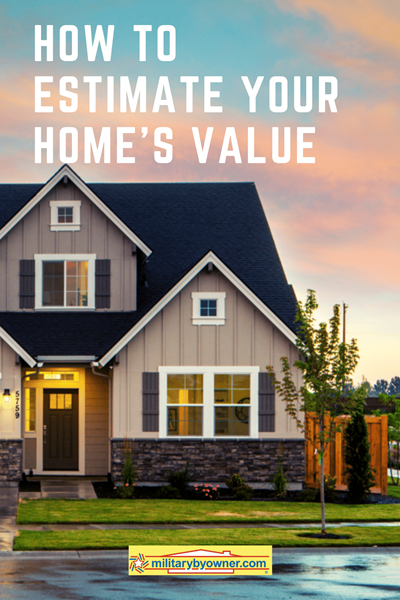
Photo from Canva
In this article:
While I’ve found that online algorithms, known as Automated Valuation Models (AVMs), have undervalued the home I own, many have found the complete opposite: These AVMs yield higher home values than a real estate agent provides upon an appraisal for a possible sale.
Now, if a computer tells you that your home should be priced at $250,000, but your real estate agent tells you that there’s simply no way that it could sell above $225,000 based on market comparables in the neighborhood, who are you most likely to listen to? It’s oh so tempting to go with the computer’s opinion.
After all, aren’t computers objective? How could their calculations possibly be wrong?

Photo from Canva
What exactly is an AVM?
If you’re just beginning to learn about what an AVM actually is and does, here’s the description AVM creator, CoreLogic provides:
“An AVM is a computer-driven mathematical formula that uses basic property characteristics, local market information, and price trends to arrive at an estimated value or value range. Lenders use AVMs because they offer a fast, affordable, statistically derived estimate of a property’s value.
Each AVM uses its own mathematical formula and may draw property data from different databases. Accuracy and reliability vary, depending on the quality of the underlying logic, data, and technology. There are a number of AVMs on the market developed by different companies.”
Both commercial (CoreLogic, Freddie Mac, Equifax, for example) and consumer-facing (Zillow, Trulia) platforms provide valuation tools that offer their best estimates of the value of your home. Whether for personal consumption and entertainment or for real estate professionals, such as a lender or real estate agent, these help determine your property’s value.
Learn about another facet of home selling: What Home Sellers Should Know About Appraisals.

AVMs vs. Real Estate Professionals
After consulting veterans of the home appraisal, mortgage, and real estate industries, however, we found that the computer algorithms that offer home valuations are not yet sufficiently capable of managing the many variables that go into determining a price point for the sale of a home.

Photo from Canva
Because an AVM does not know the physical condition of the house, they assume the property is in average condition unless the updates are listed and can be accessed through public records. There’s also no scale of adjustment for damage or upgrades.
AVMs also cannot account for:
Real estate professionals have the edge in this instance, because they physically evaluate the home and can make valuation adjustments according to the true condition of the property.
The only homes for which the algorithms do seem to prove relatively accurate, the experts explained, are "cookie-cutter" style homes that have had the good fortune of a stable market in their area for at least three years. Even still, upgrades and lot locations can skew the numbers.
3 Tips to Make a More Accurate Estimate of Your Home's Value
1) Consider Location
Let’s start with the definition of external obsolescence to help you understand the importance of a location’s specificity. According to the Appraisal Institute, external obsolescence may be caused by economic or locational factors, either temporary or permanent, but not curable by the owner, landlord, or tenant.

Photo from Canva
In short, you can buy a property on a set of train tracks for a steal, but your long term plans should include customizing the property to become your forever home because a profitable sale in the future will be difficult.
Train tracks aren’t the only reason a home’s location will dictate a lower appraisal. Any perceived undesirable building, even a school or house of worship, can lower appraisal values. Traffic and noise are major negative contributing factors.
Is your home close to any of these undesirable factors? If so, you’ll have to consider that your appraisal might not be as high as you hoped.
- Power lines
- Gun range
- Highway
- Registered sex offenders
- Hoarders
2) Know the Market
With over half a billion dollars in home sales, Sissy Lappin, author of real estate selling guide Simple and Sold, explains that overpricing is often a significant point of discord between sellers and real estate agents.
When a homeowner lists a home at a price point above what the market will typically bear, Lappin explains that this puts the seller at a competitive disadvantage, particularly when a neighbor with a similarly sized home lists at a price point commensurate with the market.

Photo from Canva
However, once a homeowner in a neighborhood lists at a high price, it can often cause additional home sellers to try to list their home at a higher rate. But, as she explains, the individual who tries to list far above market value will simply have their home on the market for much longer.
In the meantime, they are losing out on the opportunity to free up their available credit to purchase a new home. For military families trying to sell their home during a PCS, it means holding onto a house and continuing to pay for both mortgage and maintenance while paying for a home at a new duty station.
Military families don’t usually have the luxury of remaining in a home while trying to sell it. Laying the cold facts bare, Lappin explains that "Homes that are overpriced typically cost the seller an additional 5 to 9 percent, and the loss could be even more if holding costs are high."
Related Link: 6 Cheap and Easy Ways to Increase Your Home's Value.
3) Understand the AVM's Limitations
It’s irritating to look at the computer algorithms, only to realize that they have serious limitations.
Some of the sites featuring AVMs even self-report that a margin of error on home valuations is as high as 20 percent. How can they be so wrong? AVMs are purely limited to data; they have no idea how much your particular market will pay extra for the beautiful upgrade of hand-scraped Amish wood that covers your entire first floor.

Casey Fleming, author of The Loan Guide: How to Get the Best Possible Mortgage, is a veteran of the mortgage and home appraisal industries with 35 years of experience. He broke down the premises upon which the AVMs work for MilitaryByOwner. He explained that the exact algorithms are secret, but there is a general formula understood for them.
First, he said, they apply the average per-square-foot selling price of the neighborhood to each property.
"Then they look at historical data on the subject property…plus the last known sale price…and then home value trends in the area."
From this data, the AVM’s then extrapolate a current value for the property in question. Fleming then broke down each of the limitations of the AVMs:
Lack of market data: The algorithms require certain data, such as historical data and last known sale price, but this may not be available online for the AVMs to pull from. In some cases, the public records are available online, but the AVMs do not have access to these records when computing their formulations.
Further, the homes do not include any information pertaining to home inspections that could reveal problems such as fire damage, water damage, general neglect, or termite damage that would detrimentally affect the home’s value.

Photo from Canva
Over-reliance on square footage: According to the "Principle of Diminishing Utility," Fleming explained, smaller homes in a neighborhood typically" sell for more per square foot than a larger home."
AVMs adjust slightly in recognition of this data, but not sufficiently. The result is that smaller homes in neighborhoods are often undervalued while larger homes are overvalued.
Delayed information: Finally, the data uploaded into AVMs regarding comparable sales is often delayed.
If you sold your home today, that information might not be available online for several months. If your market is depreciating rapidly, and you are trying to sell a home at a price based on comparable properties that your AVM results are showing, those homes may actually have sold four months ago, and your home’s value may have since depreciated.
On the contrary, if you have a home in a market with rapidly rising prices or seasonally adjusting prices, such as homes in an area surrounding a military installation that experiences high summer moves, then your home may be undervalued according to AVM comparables.
If you are in such a situation, and you are pulling your AVM numbers in April and comparing them to homes that sold in December and January, then it’s likely that a real estate agent will be able to better guide you to a higher price point for your home sale.
At the end of the day, your home is only worth what someone will pay for it.
To get a general range estimate, it’s fine to look at the available Automated Market Values online. Still, it’s a good idea to consult a real estate professional with considerable experience selling homes in your area to get a full market analysis of your property’s value. If you disagree with your real estate agent, then it’s perfectly fine to request a second opinion from another agent or ask for additional market comparables of homes in your area that recently sold.
Get more home selling help with our free download below!
.png)
